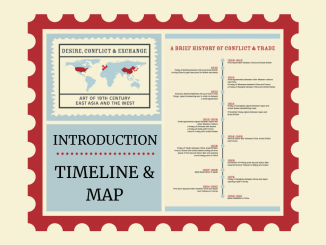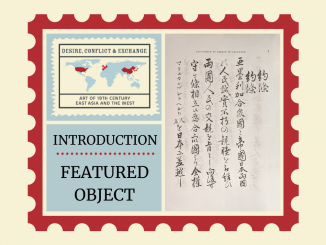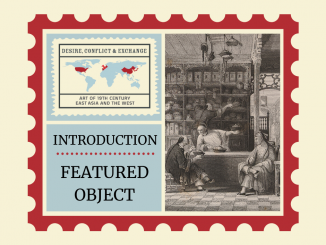Driven by the demand for market advantage and aesthetic desires, Western powers coerced Japan, China and Korea to open trade relationships as part of the 19th century’s expanding global economy. This fueled conflict between these nations as well as provided opportunities for cultural exchange.
International sea trade between East Asia and the West began in the 16th century. However, it was the various manipulative and destructive events of the 19th century that forced the interweaving of Eastern and Western economies. These aggressive and inequitable exchanges, and the overwhelming cultural transformations that resulted, created the foundation of a global market akin to the one we have today.
The functional and decorative objects in this exhibition are gateways into the political, artistic and cultural intermingling of East Asia and the West in the 19th century. These artworks capture both entitled and misinformed cultural perceptions from the past as well as the convergence of differing international mindsets. Appropriation and hybridity are the hallmarks of this period, thus it is often difficult to speak of clear origins. Porcelain was customized in China and Japan for Western tastes, while Europeans produced orientalized faux export ware for their markets. Artists from Cincinnati and the Western College for Women (Oxford, OH) adapted East Asian mediums and subjects. The world suddenly became smaller as ideas, commodities and cultures connected in an interdependent network of exchange.




